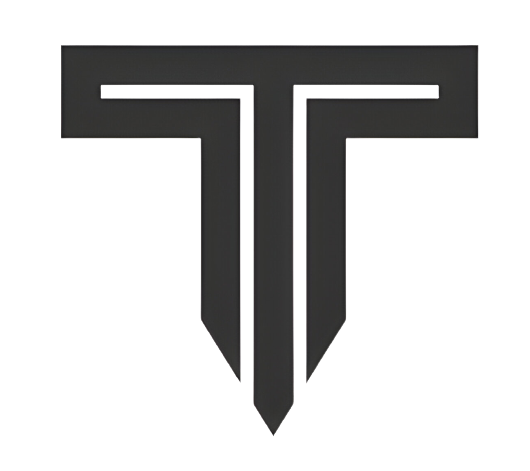"Executive Summary Medical Device Engineering Market Size and Share Across Top Segments
Global medical device engineering market size was valued at USD 7.66 billion in 2024 and is projected to reach USD 11.83 billion by 2032, with a CAGR of 5.8% during the forecast period of 2025 to 2032.

This global Medical Device Engineering Market report identifies and analyses the emerging trends along with major drivers, challenges and opportunities in the Medical Device Engineering Market industry with analysis on vendors, geographical regions, types, and applications. This Medical Device Engineering Market study estimates the market status, growth rate, future trends, market drivers, opportunities and challenges, risks and entry barriers, sales channels, and distributors. This report proves to be an indispensable document for every market enthusiast, policymaker, investor, and player. This global Medical Device Engineering Market research report is a professional and a detailed report focusing on primary and secondary drivers, market share, leading segments and geographical analysis.
An excellent and precise market research report serves as a backbone for your business when it comes to thrive in the competition. Medical Device Engineering Market report offers a telescopic view of the competitive landscape to the client so that they can plan the strategies accordingly. This Medical Device Engineering Market research report offers an in-depth overview of product specification, technology, product type and production analysis considering major factors such as revenue, cost, gross and gross margin. The report is presented to the clients with full commitment and best possible service is assured depending upon your requirements.
Review comprehensive data and projections in our Medical Device Engineering Market report. Download now:
https://www.databridgemarketresearch.com/reports/global-medical-device-engineering-market
Medical Device Engineering Market Growth Snapshot
**Segments**
- By Type: The medical device engineering market can be segmented based on its type into active implantable medical devices, non-active implantable medical devices, and active medical devices.
- By Application: It can also be segmented by application, including diagnosis and monitoring devices, therapeutic devices, surgical devices, and patient aids.
- By End-User: The market can further be segmented by end-user, such as hospitals, ambulatory surgical centers, specialty clinics, and others.
As the global medical device engineering market continues to expand, it is crucial to understand the various segments that make up this dynamic industry. By analyzing the market based on different types of medical devices, applications, and end-users, stakeholders can gain valuable insights into emerging trends and opportunities within the sector.
**Market Players**
- Medtronic
- Johnson & Johnson Services, Inc.
- GE Healthcare
- Koninklijke Philips N.V.
- Siemens Healthcare GmbH
- Baxter
- Boston Scientific Corporation
- Stryker
- B. Braun Melsungen AG
- NuVasive, Inc.
These market players represent a mix of established companies and emerging innovators within the medical device engineering space. Their products and services play a significant role in shaping the market landscape and driving advancements in healthcare technology. Understanding the contributions and strategies of these key players is essential for stakeholders looking to navigate the competitive landscape effectively.
The global medical device engineering market is witnessing significant growth driven by technological advancements, increasing healthcare expenditure, and a rising prevalence of chronic diseases worldwide. Key market players such as Medtronic, Johnson & Johnson Services, Inc., and GE Healthcare are at the forefront of innovation, developing cutting-edge medical devices to meet the evolving needs of healthcare providers and patients. These companies leverage their expertise in engineering and healthcare to bring forth innovative solutions that enhance diagnostics, monitoring, treatment, and patient care.
The market segmentation based on types of medical devices, including active implantable devices, non-active implantable devices, and active medical devices, enables a comprehensive understanding of the diverse product offerings within the medical device engineering industry. Each type of medical device serves a specific function, ranging from life-saving implantable devices to advanced diagnostic equipment. By categorizing the market based on device types, stakeholders can identify key growth areas and investment opportunities in the evolving landscape of medical technology.
Moreover, the segmentation by application sheds light on the various uses of medical devices in diagnosis, monitoring, therapy, surgery, and patient assistance. This segmentation reflects the broad scope of medical device engineering applications across different healthcare settings, from hospitals and ambulatory surgical centers to specialty clinics. Understanding the diverse applications of medical devices is essential for market players to tailor their product development strategies and address the specific needs of healthcare providers and patients.
Furthermore, the segmentation by end-users such as hospitals, ambulatory surgical centers, and specialty clinics provides insights into the demand for medical devices across different healthcare settings. Hospitals remain the primary end-users of medical devices, owing to their extensive use of diagnostic, therapeutic, and surgical equipment. Ambulatory surgical centers and specialty clinics also drive demand for specialized medical devices tailored to outpatient care and specific medical procedures.
In conclusion, the global medical device engineering market continues to expand rapidly, driven by technological innovation, increasing healthcare investments, and a growing focus on improving patient outcomes. Market players such as Medtronic, Johnson & Johnson Services, Inc., and GE Healthcare lead the industry with their advanced product offerings and strategic initiatives. By understanding the market segmentation based on device types, applications, and end-users, stakeholders can capitalize on emerging trends and opportunities within the dynamic landscape of medical device engineering.The global medical device engineering market holds immense potential for growth and innovation, driven by technological advancements, increasing healthcare expenditure, and a rising prevalence of chronic diseases globally. Key market players such as Medtronic, Johnson & Johnson Services, Inc., GE Healthcare, and others are instrumental in shaping the industry through their cutting-edge medical devices and solutions. These companies are at the forefront of research and development, continually introducing new technologies to meet the evolving needs of healthcare providers and patients. Their expertise in engineering and healthcare plays a crucial role in advancing diagnostics, monitoring, treatment, and overall patient care, driving the market forward.
The segmentation of the medical device engineering market based on types of devices provides a comprehensive view of the diverse product offerings within the industry. Active implantable devices, non-active implantable devices, and active medical devices serve specific functions ranging from life-saving implantable technologies to advanced diagnostic tools. Understanding the nuances of each device type enables stakeholders to identify key growth areas and investment opportunities in the ever-evolving medical technology landscape. This segmentation highlights the importance of innovation and specialization in meeting the varied healthcare needs of individuals worldwide.
Additionally, the segmentation by application reveals the extensive uses of medical devices in different healthcare scenarios, including diagnosis, monitoring, therapy, surgery, and patient assistance. This diverse range of applications underscores the broad impact of medical device engineering across various healthcare settings, from hospitals to specialty clinics. Tailoring product development strategies to address specific application areas is essential for market players to meet the demands of healthcare providers and enhance patient outcomes effectively. By analyzing the market based on application segments, stakeholders can align their offerings with the prevailing needs of the healthcare industry.
Moreover, the segmentation by end-users sheds light on the distribution of medical devices across different healthcare facilities such as hospitals, ambulatory surgical centers, and specialty clinics. While hospitals remain the major consumers of medical devices due to their extensive use of diagnostic and therapeutic equipment, ambulatory surgical centers and specialty clinics also drive demand for specialized technologies catering to specific medical procedures and outpatient care. Understanding the preferences and requirements of various end-users is crucial for market players to optimize their product portfolios and adapt to the evolving healthcare landscape effectively.
In conclusion, the global medical device engineering market presents a promising outlook for stakeholders, fueled by continuous innovation, increasing healthcare investments, and a focus on enhancing patient care. Market players must stay abreast of market segmentation trends based on device types, applications, and end-users to capitalize on emerging opportunities and drive sustainable growth within this dynamic sector. The collaboration between technology and healthcare expertise remains paramount in shaping the future of medical device engineering and advancing healthcare outcomes worldwide.
Get a closer look at the company’s market penetration
https://www.databridgemarketresearch.com/reports/global-medical-device-engineering-market/companies
Global Medical Device Engineering Market – Segmentation & Forecast Question Templates
- What is the market size snapshot for the Medical Device Engineering industry?
- What is the global market growth trend for Medical Device Engineering s?
- Which key segmentations are assessed in the Medical Device Engineering Market?
- What are the names of top-rated players in the Medical Device Engineering Market sector?
- What countries offer the highest opportunities in Medical Device Engineering Market?
- What are the names of leading regional competitors in Medical Device Engineering Market?
Browse More Reports:
Global Sports Technology Market
Global Premium Spirits Market
Global Caviar Market
Global Gummies and Jellies Market
North America Recovered Carbon Black (rCB) Market
Middle East and Africa Submarine Cable System Market
Egypt Medical Devices Market
South Africa Safety Shoes Market
Global Acetaldehyde Market
Global Alcohol Sensor Market
Global Arbitrary Waveform Generator Market
Global Automotive Uninterruptible Power Supply (UPS) (In Vehicle UPS) Market
Global Automotive Windshield Market
Global Biohacking Market
Global Cladding Market
About Data Bridge Market Research:
An absolute way to forecast what the future holds is to comprehend the trend today!
Data Bridge Market Research set forth itself as an unconventional and neoteric market research and consulting firm with an unparalleled level of resilience and integrated approaches. We are determined to unearth the best market opportunities and foster efficient information for your business to thrive in the market. Data Bridge endeavors to provide appropriate solutions to the complex business challenges and initiates an effortless decision-making process. Data Bridge is an aftermath of sheer wisdom and experience which was formulated and framed in the year 2015 in Pune.
Contact Us:
Data Bridge Market Research
US: +1 614 591 3140
UK: +44 845 154 9652
APAC : +653 1251 975
Email:- [email protected]
"


